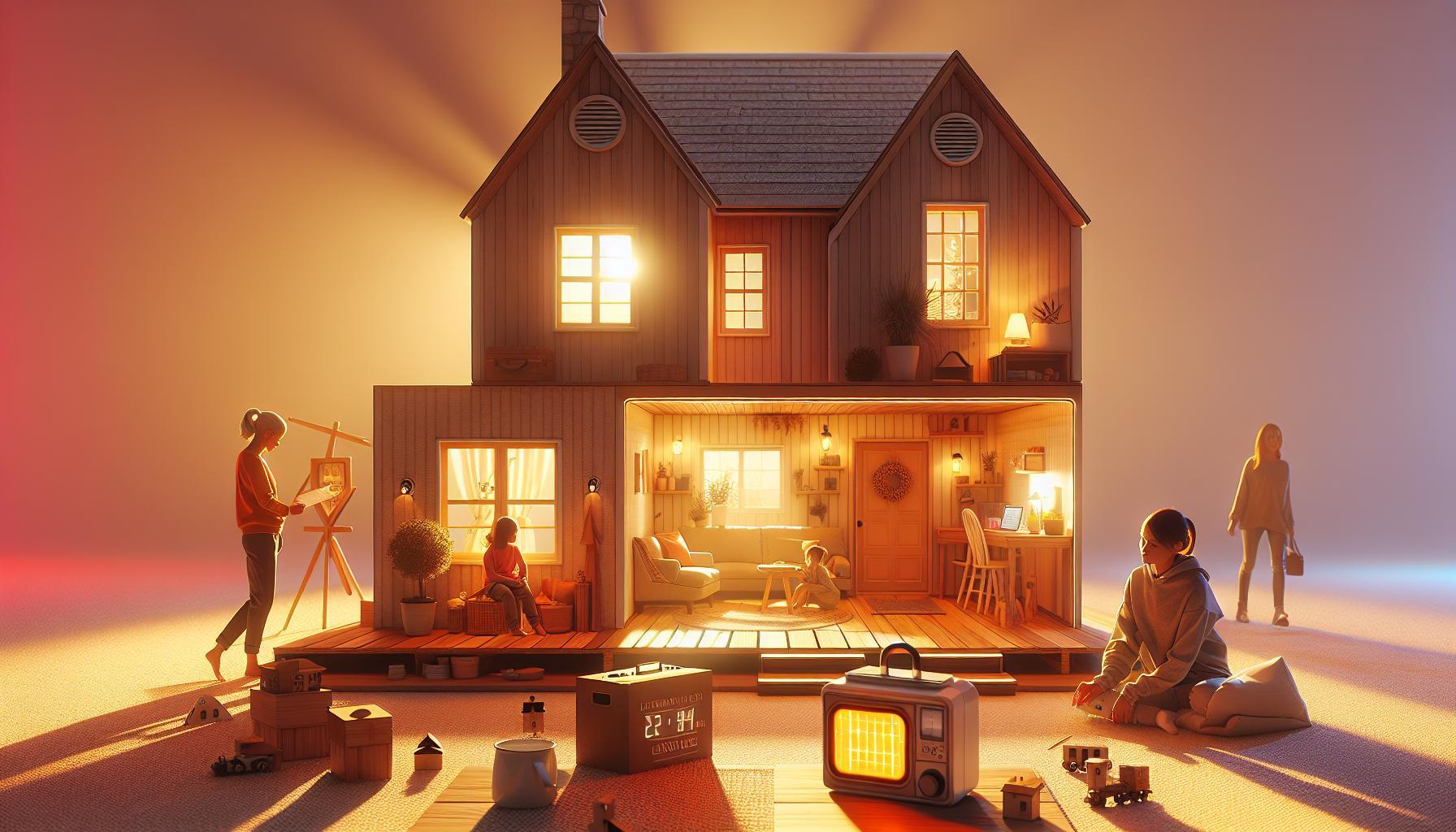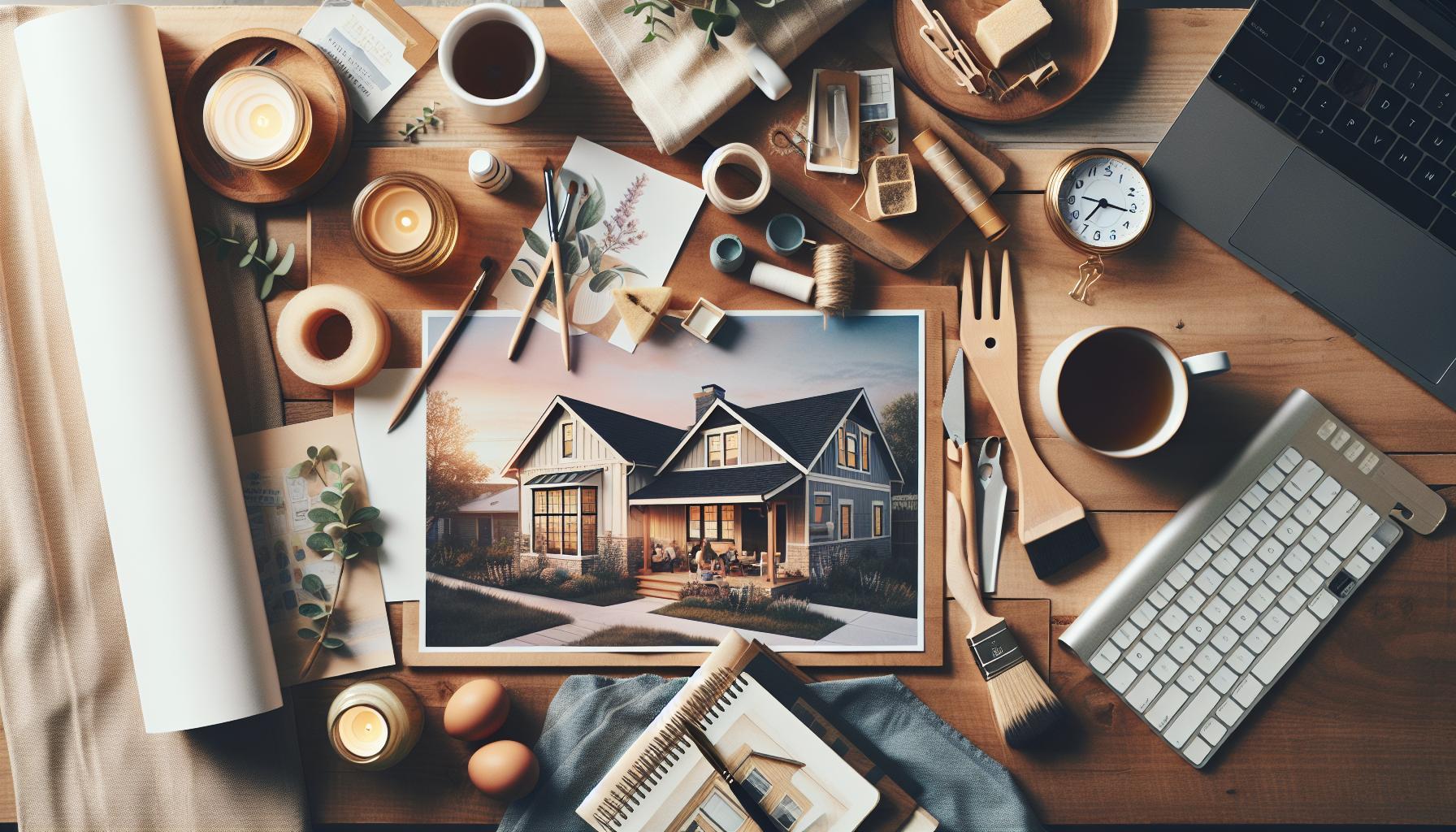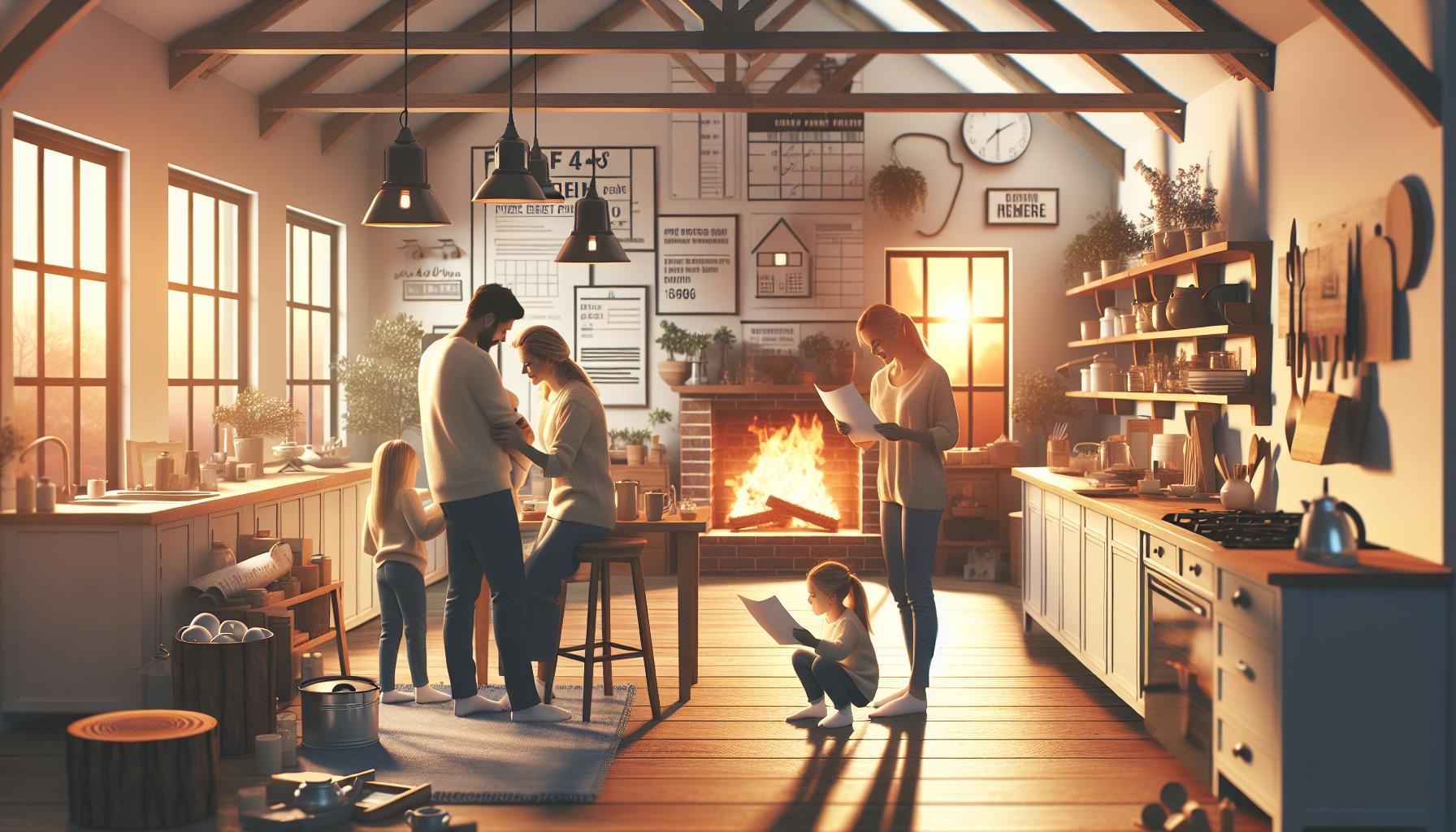Are you overwhelmed by clutter in your living space? Embracing minimalist decluttering can not only create a more serene environment but also improve your mental well-being. This checklist will guide you through transforming your home into a functional, organized sanctuary, making it easier to enjoy the things that truly matter.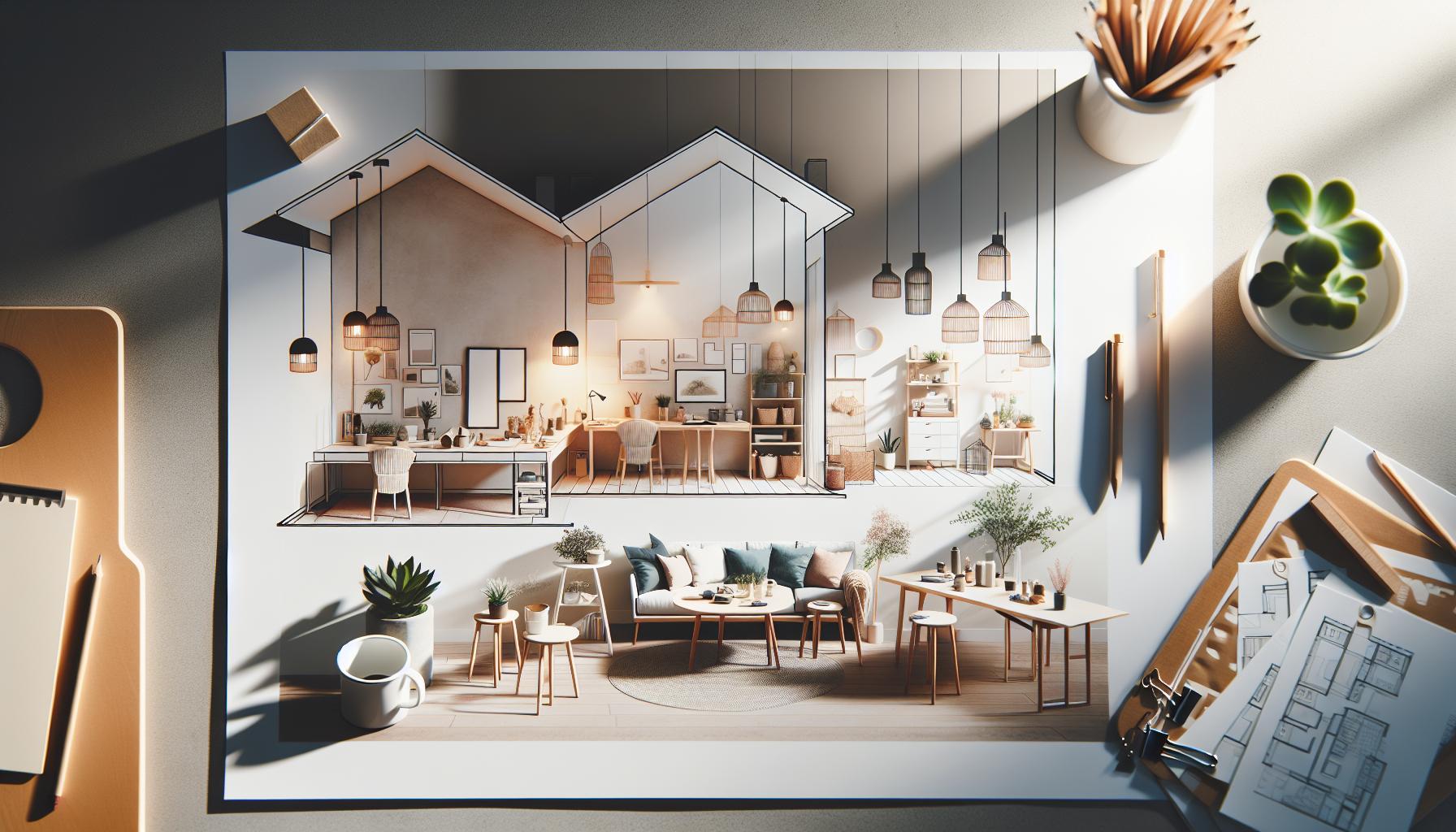
Understanding the Minimalist Mindset: Embracing Simplicity in Your Home
To create a harmonious living space, adopting a minimalist mindset is essential. This approach encourages you to see your home not just as a collection of possessions but as a sanctuary that reflects your values and priorities. Embracing simplicity allows you to focus on what truly matters, letting go of clutter that distracts you from enjoying your environment. This transformation can lead to reduced stress and increased productivity, making it an attractive lifestyle choice for many.
Understanding minimalism starts with recognizing that it’s not merely about having fewer items; it’s about intentionality in your choices. When you engage with the Minimalist Decluttering Checklist: Transform Your Home Space, you begin to evaluate each item’s value and whether it serves a purpose in your life. For example, when decluttering your living room, consider whether each piece of furniture or decoration contributes positively to your comfort or aesthetic. If it doesn’t, it may be time to let it go.
Practical Steps to Embrace Minimalism
To help you get started, here are some actionable steps that align with the minimalist mindset:
- Assess Your Items: Go room by room and determine what you genuinely need. Make three categories: keep, donate, and discard.
- Set Clear Goals: Define what you want to achieve with your space. A clear vision can guide your decluttering process.
- Create a Decluttering Schedule: Instead of tackling everything at once, set aside time each week to focus on specific areas of your home.
- Limit New Acquisitions: Before bringing something new into your home, ask yourself if it enhances your life or adds to the clutter.
By implementing these steps, you can steadily transform your space into a minimalist haven that promotes peace and clarity. The act of simplifying your home environment becomes a journey toward creating a meaningful lifestyle-one where every item serves a purpose and contributes to your overall well-being.
| Room | Common Clutter | Minimalist Goal |
|---|---|---|
| Living Room | Unnecessary furniture and decor | Open space for relaxation and connection |
| Kitchen | Excess gadgets and utensils | Functional kitchen essentials only |
| Bedroom | Clothing piles and unused furnishings | Clutter-free area for restful sleep |
Embracing a minimalist mindset goes beyond physical decluttering; it’s about cultivating a space that fosters creativity, joy, and mindfulness. Each decision you make in transforming your home contributes to a lifestyle that prioritizes simplicity and purpose, aligning perfectly with the principles outlined in the Minimalist Decluttering Checklist: Transform Your Home Space.
Step-by-Step Guide to Assessing Your Belongings
Assessing your belongings doesn’t have to be an overwhelming chore; it can be a liberating journey. As you dive into the minimalist decluttering process, it’s essential to approach your items thoughtfully. This step-by-step guide will help you make informed decisions about what stays and what goes, ultimately transforming your home space into a haven of simplicity and serenity.
Begin with a Clear Space
Before touching your belongings, create a space to assess them. Choose a room or area where you can spread out and see your items clearly, free from distractions. A well-lit environment will help you evaluate each item effectively. Once you have your space set up, follow these actionable steps:
- Gather Your Belongings: Start by collecting items from each room. Bring them into the designated area, so you can see everything you possess in one view.
- Sort into Categories: Divide your items into categories such as clothing, books, and kitchenware. Grouping similar items together will simplify your assessment process.
- Use the 30-Day Rule: For each item, ask yourself, “Have I used this in the last 30 days?” If not, consider whether it truly serves a purpose in your life.
Evaluate Each Item
As you evaluate each belonging, it’s important to be honest about its relevance and value in your life. Use the following criteria for your assessment approach:
| Criteria | Questions to Consider |
|---|---|
| Functionality | Does this item serve a practical purpose? |
| Emotional Connection | Does this item hold significant sentimental value? |
| Condition | Is this item damaged or worn beyond use? |
| Future Intentions | Will I realistically use this item in the foreseeable future? |
Using this criteria will help you make objective decisions. If an item doesn’t meet your needs in any of these areas, it might be time to let it go.
Make Decisions with Confidence
Ultimately, the goal of assessing your belongings is to create a space that resonates with your minimalist aspirations. For each item, you can choose to keep, donate, sell, or discard. For instance, valuable items that you no longer use might bring joy to someone else if you donate them. Selling items online through platforms like eBay or Facebook Marketplace can be extremely rewarding, both financially and emotionally.
Remember, your minimalist decluttering checklist is a tool to guide you through this process. Each decision brings you closer to a transformed home space-one that allows you to breathe and live with intention. Taking these thoughtful steps will not only enhance your living environment but also help foster a mindset of appreciation for the essentials in your life.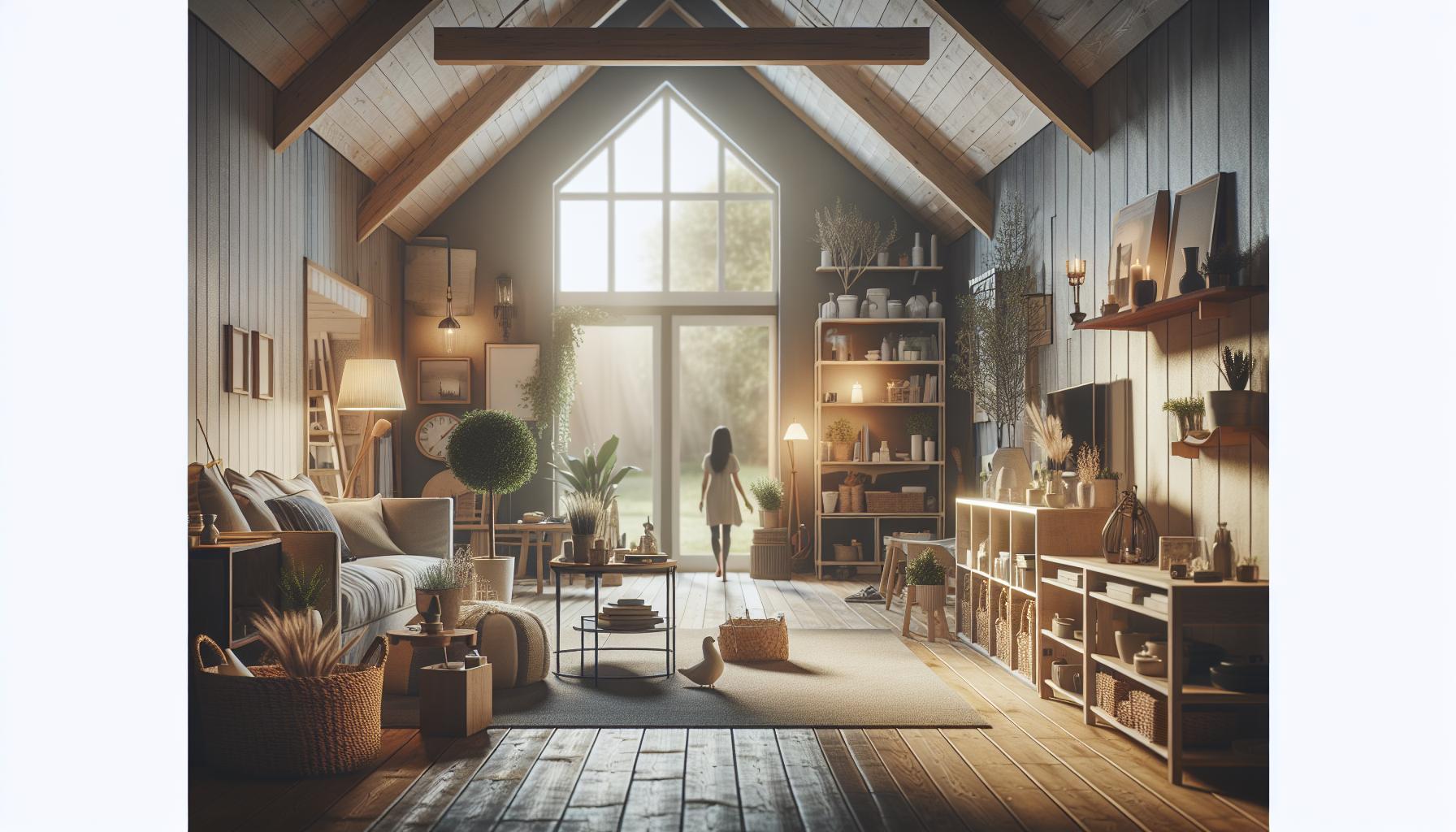
Room-by-Room Decluttering Strategies: Making the Process Manageable
The journey to a clutter-free home can seem overwhelming at first. However, a strategic, room-by-room approach can transform this daunting task into a series of manageable steps. By focusing on individual spaces, you can create a minimalist environment that encourages peace of mind and clarity, ultimately enhancing your daily life.
Bedrooms: Start with the Essentials
Your bedroom should be a sanctuary, but it often becomes a catch-all for items that don’t belong. Begin by clearing surfaces such as nightstands and dressers. Ask yourself if each item is truly needed or sparks joy. A common tactic is to empty your drawers and only return items that you frequently use. Consider implementing the following strategies:
- Clothing Purge: Use the seasonal method – if you haven’t worn an item in the last six months, it’s time to let go.
- Bio-Box: Keep a box in your closet for items that you’re unsure about; revisit it in a month to reassess.
- Donation Goal: Set a target for how many items you plan to donate, creating motivation through a clear objective.
Living Room: Create a Welcoming Space
The living room is often the hub of the home and can easily become cluttered with books, magazines, and decorative items. To maintain a minimalist feel in this space, follow these tips:
- Surface Strategy: Limit the number of items on coffee tables and side tables to just a few meaningful decorations or books.
- Media Management: Streamline entertainment systems by digitizing music and movies. Consider storing DVDs in a single case instead of multiple bulky cases.
- Functional Furniture: Invest in pieces that double as storage, such as ottomans with hidden compartments.
Kitchen: Optimize and Organize
The kitchen can quickly become overwhelming, with gadgets and appliances taking over valuable counter space. Tackle this room by refining your collection of cooking tools and utensils. Here are actionable steps to consider:
- Appliance Audit: Evaluate kitchen appliances based on usage. If you haven’t used a slow cooker or bread maker in over a year, consider donating or selling it.
- Cabinet Clarity: Keep only the serving dishes and tools you regularly use. Organize cabinets by category and label accordingly for easy access.
- Container Strategy: Utilize clear containers for pantry staples, allowing you to see what you have and reducing unnecessary purchases.
Table: Quick Reference for Room-by-Room Decluttering
| Room | Strategy | Tip |
|---|---|---|
| Bedroom | Clothing Purge | Donate items not worn in 6 months. |
| Living Room | Surface Management | Limit surfaces to a few meaningful items. |
| Kitchen | Appliance Audit | Donate or sell unused appliances. |
By breaking down the decluttering process into focused tasks per room, you not only make the journey manageable but also create an environment that truly reflects a minimalist lifestyle. As you move through each space, remember that the ultimate goal is to create a home that fosters calm, clarity, and joy, aligning closely with the principles outlined in the ‘Minimalist Decluttering Checklist.’
Creating Your Personalized Decluttering Checklist
Creating a personalized decluttering checklist can be the game-changer you need for a more organized and serene living space. A tailored approach not only considers your unique belongings and lifestyle but also empowers you to make decisions that reflect your values and priorities. By identifying what truly matters to you, you can streamline your space and remove the distractions that clutter can bring.
To kickstart your own customized checklist, assess each room in your home and consider these essential categories:
- Sentimental Items: Evaluate items that evoke memories; keep only those that genuinely bring joy.
- Unused Essentials: Identify tools or appliances that you have not used in the past year.
- Duplicate Items: Check for multiples-do you really need three frying pans?
- Outdated Technology: Dispose of electronics that no longer work or serve a purpose.
- Clothing: Sort through your wardrobe-if it doesn’t fit or you haven’t worn it in a year, consider parting ways.
An effective strategy is to establish a timeline for your decluttering project. For example, you might tackle one room per week, moving through your home systematically. As you work, take note of the items that fit into your decluttering categories and add them to your list. Consistency is key.
Tracking Your Progress
Maintaining an organized approach will help you stay motivated. Use a simple table to track what you’ve decluttered:
| Category | Items Decluttered | Date |
|---|---|---|
| Clothing | Old t-shirts, jeans | June 10, 2025 |
| Kitchen | Dishes, unused appliances | June 17, 2025 |
| Living Room | Books, old magazines | June 24, 2025 |
By visually tracking your progress, you’ll witness the transformation evolve and feel accomplished with each milestone. This progress not only reinforces your commitment to minimalism but also serves as a tangible memory of your journey towards a simplified life.
So grab a pen and paper, or open a notes app, and start crafting your personal decluttering checklist today. Each step forward is a victory in your quest to transform your home space!
Tips for Maintaining a Clutter-Free Space After Decluttering
Creating a serene and organized living space doesn’t end with a successful decluttering session; it’s an ongoing commitment that requires strategies to maintain the newly minimalist environment. Staying clutter-free is essential for peace of mind and efficiency in your daily life. By implementing a few simple habits, you can ensure that your home remains a sanctuary of calm and order, perfectly aligned with the principles outlined in the Minimalist Decluttering Checklist: Transform Your Home Space.
Establish Daily Routines
One of the most effective ways to keep clutter at bay is by incorporating daily habits into your routine. Here are some practices to consider:
- One In, One Out: For every new item you bring into your home, consider removing one. This simple rule helps prevent accumulation and encourages mindful shopping.
- Daily Cleanup: Set aside 10-15 minutes each day to tidy up common areas. Focus on putting items back in their designated places.
- Nightly Reset: Before bed, take a quick tour of your living space. Put away any items that were out during the day, ensuring you wake up to a clean slate.
Designate Specific Spaces
Every item in your home should have a specific place. When decluttering, you likely made decisions about what to keep; now, it’s time to ensure that everything has a designated spot. This not only makes it easier to find things but also discourages clutter buildup. Consider these tips:
- Label Your Storage: Use labels for drawers, bins, and shelves. This visual cue will remind all household members where items belong.
- Emergency Declutter Zones: Identify trouble areas within your home where clutter likes to settle-be it a kitchen counter or an entryway. Make these zones a priority for regular check-ins.
Regular Reviews and Reassessments
Schedule time for periodic evaluations of your space. This can be monthly, quarterly, or whatever suits your lifestyle. During these reviews, revisit the principles of the Minimalist Decluttering Checklist: Transform Your Home Space to assess what items still align with your needs and values.
| Review Frequency | Action Steps | Expected Outcome |
|---|---|---|
| Monthly | Check commonly used spaces (kitchen, living room) for unnecessary items. | Immediate decluttering of high-traffic areas. |
| Seasonally | Evaluate clothing and seasonal items. Donate or discard what you haven’t used. | Keep your closet manageable and fresh. |
| Annually | Comprehensive family review of all belongings. Retire any outdated or unused items. | A lighter, more functional living space. |
By integrating these mindful strategies into your daily life, you can preserve the tranquil atmosphere you’ve created through the decluttering process. After all, a clutter-free home is a continual journey rather than a one-time event.
DIY Organizational Solutions: Tools to Help You Along the Way
The process of decluttering your home is more than just throwing away unwanted items; it’s about creating a space that promotes peace and productivity. With the right DIY organizational tools, you can streamline this journey to minimalism and make your home a serene sanctuary. These solutions not only simplify the decluttering process outlined in your minimalist decluttering checklist but also foster a habit of orderliness in your daily life.
Essential Tools for Your Minimalist Journey
When diving into a decluttering project, having the right tools can significantly influence your success. Here are some invaluable items to assist in your organizational endeavors:
- Storage Bins and Baskets: Clear storage bins allow you to see what you have at a glance, while woven baskets add a stylish touch to your decor. Incorporating these can help to categorize your belongings, making it easier to keep similar items together.
- Label Maker: This handy device can bring clarity to your organization. By clearly labeling bins, shelves, and boxes, you prevent clutter from creeping back into your space.
- Hanging Organizers: Utilize vertical space and keep items off countertops with hanging organizers. They’re perfect for smaller items that often get lost or cluttered in drawers and cabinets.
- Multi-Functional Furniture: Invest in furniture that doubles as storage, such as ottomans with hidden compartments or coffee tables with shelves. These pieces can significantly reduce clutter while enhancing the functionality of your space.
Making the Most of Your Decluttering Process
To effectively implement the strategies from the minimalist decluttering checklist, consider these actionable steps to enhance your organization:
| Step | Action | Tools Needed |
|---|---|---|
| 1 | Choose one area of your home to focus on. | Storage bins, trash bags |
| 2 | Sort items into ‘Keep’, ‘Donate’, and ‘Trash’ categories. | Label maker or labels |
| 3 | Clean and organize the remaining items. | Wipes, vacuum cleaner, storage solutions |
| 4 | Place everything in its designated spot and label where necessary. | Hanging organizers, bins |
By employing these tools and following a structured approach, you can transform your living space according to the principles of your minimalist decluttering checklist. This will not only help in liberating your home from excess but will also foster a mindful interaction with your belongings. Embrace simplicity and enjoy the newfound calmness that comes with an organized environment.
Evolving Your Space: Adjusting Your Decor for a Minimalist Aesthetic
Creating a minimalist aesthetic in your home goes beyond merely decluttering; it’s about fostering a serene environment that prioritizes simplicity, functionality, and mindful living. As you embrace the principles found in a minimalist decluttering checklist, consider each item not just as an object but as a part of your living experience. This approach shifts your perspective from accumulation to intentionality, allowing your space to breathe and reflect your values.
Assess Your Current Decor
Start by evaluating your existing decor. Identify items that do not serve a purpose or bring you joy, which is key in minimalist design. Consider whether each piece fits into a cohesive theme or contributes to the overall ambiance. Create a checklist similar to the minimalist decluttering checklist to decide what to keep, donate, or discard. Here are some practical steps:
- Visualize the space: Picture how you want each room to look and feel.
- Make a list of items that are essential versus those that are merely decorative.
- Prioritize multifunctional furniture that provides both utility and style.
Incorporating Natural Elements
To enhance your minimalist aesthetic, infuse your decor with natural elements that create warmth and character without overwhelming the senses. Incorporating materials like wood, stone, and plants can soften stark spaces while maintaining a clean look. This can be achieved by:
- Adding a single statement piece, such as a rustic wooden table or a large potted plant.
- Utilizing textures, such as woven baskets or linen curtains, to add depth.
- Keeping color palettes neutral, with occasional earthy tones for accents.
Mindful Decoration Choices
Select decor items mindfully, focusing on quality over quantity. Each piece should resonate with your personal style while adhering to the functionality that minimalism champions. Avoid clutter by choosing decor that is versatile and enhances your home’s purpose. For example:
| Decor Item | Functionality | Style Contribution |
|---|---|---|
| Decorative Box | Storage | Texture and Warmth |
| Wall Art | Visual Interest | Personal Expression |
| Accent Rug | Comfort | Color and Depth |
By thoughtfully curating elements in your space according to a minimalist decluttering checklist, you can create a home that not only looks visually appealing but also supports a lifestyle of calm and intentionality. Each room, with its elegant simplicity, becomes a sanctuary that welcomes you and fosters peace of mind.
The Benefits of Minimalism: How Decluttering Enhances Your Lifestyle
Embracing a minimalist lifestyle offers transformative benefits that extend far beyond a tidy home. Did you know that studies have shown a direct correlation between physical clutter and mental stress? By focusing on decluttering your space, you can significantly elevate your overall well-being. Here’s how a minimalist approach can enhance your daily experience.
Reduction of Stress and Anxiety
A cluttered environment often leads to scattered thoughts and heightened anxiety. By utilizing a minimalist decluttering checklist, you can streamline your possessions, allowing for a clearer mind. Implementing the *Minimalist Decluttering Checklist: Transform Your Home Space* not only creates physical order but fosters mental peace. When everything has its designated place, daily tasks become more manageable, reducing stress levels significantly.
Improved Focus and Productivity
With fewer distractions vying for your attention, you can maximize your focus and productivity. Here are some practical steps to take:
- Evaluate your workspace: Remove items that do not contribute to your tasks.
- Create zones: Designate areas for specific activities, like work, reading, or relaxation.
- Set limits: Allow only a certain number of tools or decor items on display to maintain clarity.
These adjustments not only promote productivity but also cultivate a sense of purpose in your surroundings.
Financial Savings
Adopting minimalism often leads to smarter financial choices. By consciously deciding what to keep and what to discard, you naturally limit unnecessary purchases. This can contribute to substantial savings over time. Here is a simple table that illustrates potential savings through mindful consumption:
| Category | Before Minimalism | After Minimalism |
|---|---|---|
| Monthly Subscriptions | $100 | $50 |
| Clothes Spending | $200 | $80 |
| Unnecessary Gadgets | $150 | $30 |
Streamlining your possessions results not only in saving money but also in investing in things that truly matter to you, enhancing your overall life satisfaction.
Better Relationships
Living minimally can enhance your relationships with others. A simplified space invites guests in with open arms and fosters quality time. Instead of being overwhelmed by what surrounds you, you can focus on interpersonal connections. Create an inviting atmosphere by removing distractions, allowing for meaningful conversations and shared experiences.
Engaging in a minimalist lifestyle through effective decluttering methods not only transforms your home but also paves the way to a more satisfying and enriching existence.
Q&A
What is a Minimalist Decluttering Checklist?
A Minimalist Decluttering Checklist is a structured guide designed to help you reduce clutter in your home methodically. It provides straightforward steps to assess, organize, and eliminate unnecessary items, ultimately striving to create a calmer living space.
Using this type of checklist can simplify the decluttering process. For instance, it often includes categories like clothing, electronics, and sentimental items, guiding you through each area efficiently. Start with smaller sections to build momentum and encourage a more minimalist lifestyle.
How do I use the Minimalist Decluttering Checklist effectively?
To use the Minimalist Decluttering Checklist: Transform Your Home Space effectively, begin by choosing one area to focus on, such as a room or closet. Follow the checklist step by step, assessing each item based on its necessity and value.
After identifying items to keep, donate, or discard, ensure you have clear storage solutions for the *kept items*. This practice fosters ongoing organization. Aim to revisit the checklist periodically to maintain a minimalist home. Consider pairing it with a home organization plan for even better results!
Why does minimalist decluttering matter?
Minimalist decluttering matters because it enhances your mental clarity and reduces stress by creating a more organized environment. A decluttered space can signify a clearer mind and a more focused lifestyle.
Moreover, by embracing minimalism, you can cultivate better *spending habits* and a deeper appreciation for what you own. This shift not only improves your physical space but also encourages emotional well-being. Consider exploring more ways to maintain a calm home space with our sorting strategies.
Can I declutter while living with others?
Yes, you can declutter while living with others; however, clear communication is key. Discuss your intentions with housemates or family members to gain their support and input, making the process collaborative.
Set agreed-upon goals together and designate communal areas for shared items. This approach ensures everyone feels included and respected, fostering a sense of accomplishment while transforming your shared home space. A successful decluttering experience often hinges on teamwork and compromise.
What items should I include in my decluttering checklist?
Your decluttering checklist should include items across various categories such as clothing, books, kitchenware, and electronics. Evaluate each item based on its usefulness and your attachment to it.
Using the Minimalist Decluttering Checklist: Transform Your Home Space, consider items like duplicates (e.g., utensils), clothes you haven’t worn for a year, and any broken items that you haven’t repaired. This strategic approach fosters an impactful *decluttering journey*, promoting a more organized living space.
How can I maintain a clutter-free home after decluttering?
To maintain a clutter-free home, adopt the *one-in, one-out* rule-every time you acquire something new, let go of one item. This practice keeps clutter at bay and encourages mindful consumption.
Regularly revisit your Minimalist Decluttering Checklist and make it a habit to assess areas of your home every few months. By incorporating simple daily organization routines, you’ll reinforce a minimalist lifestyle, ultimately transforming your home space into a sanctuary.
Why is it difficult to declutter, and how can I overcome this?
Many find decluttering difficult due to emotional attachments to items. To overcome this, remind yourself of the benefits of a minimalist lifestyle and focus on the *stress-relief* that comes from a clearer space.
Set small goals and tackle one section at a time using the Minimalist Decluttering Checklist: Transform Your Home Space to stay organized. Engaging a friend for support can also lighten the emotional load and make the process more enjoyable.
Final Thoughts
As you embark on your minimalist decluttering journey, remember that transforming your home space is more than just reducing clutter; it’s about creating an environment that inspires clarity and peace. By following this checklist, you can take intentional steps toward a more organized and mindful living space.
Start small and tackle one area at a time-each little victory will build your confidence and motivate you to keep going. Remember to involve your family in the process, turning decluttering into an engaging and collaborative activity.
We encourage you to revisit the key points, utilize the actionable strategies outlined, and share your progress along the way. Your home is your sanctuary, and with each item you let go of, you’re making room for something new and meaningful.
So, take a deep breath, gather your supplies, and dive into your minimalist transformation. And don’t hesitate to explore more resources and tips on our site-your journey toward a simplified space starts now!



